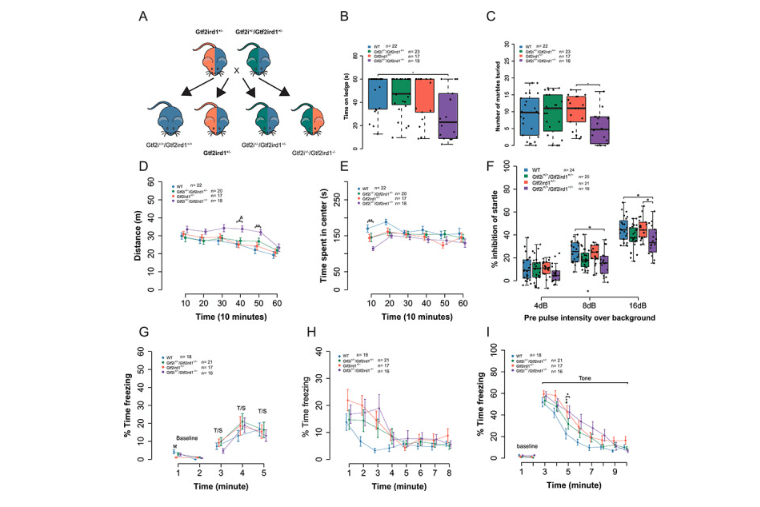Functions of Gtf2i and Gtf2ird1 in the developing brain: transcription, DNA binding and long-term behavioral consequences

Kopp ND, Nygaard KR, Liu Y, McCullough KB, Maloney SE, Gabel HW, Dougherty JD. Human Molecular Genetics. 1 May 2020. https://doi.org/10.1093/hmg/ddaa070
Abstract
Gtf2ird1 and Gtf2i are two transcription factors (TFs) among the 28 genes deleted in Williams syndrome, and prior mouse models of each TF show behavioral phenotypes. Here we identify their genomic binding sites in the developing brain and test for additive effects of their mutation on transcription and behavior. GTF2IRD1 binding targets were enriched for transcriptional and chromatin regulators and mediators of ubiquitination. GTF2I targets were enriched for signal transduction proteins, including regulators of phosphorylation and WNT. Both TFs are highly enriched at promoters, strongly overlap CTCF binding and topological associating domain boundaries and moderately overlap each other, suggesting epistatic effects. Shared TF targets are enriched for reactive oxygen species-responsive genes, synaptic proteins and transcription regulators such as chromatin modifiers, including a significant number of highly constrained genes and known ASD genes. We next used single and double mutants to test whether mutating both TFs will modify transcriptional and behavioral phenotypes of single Gtf2ird1 mutants, though with the caveat that our Gtf2ird1 mutants, like others previously reported, do produce low levels of a truncated protein product. Despite little difference in DNA binding and transcriptome-wide expression, homozygous Gtf2ird1 mutation caused balance, marble burying and conditioned fear phenotypes. However, mutating Gtf2i in addition to Gtf2ird1 did not further modify transcriptomic or most behavioral phenotypes, suggesting Gtf2ird1 mutation alone was sufficient for the observed phenotypes.